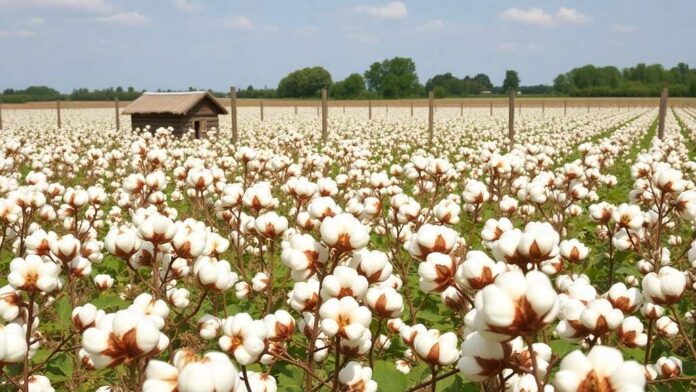Brazil’s cotton harvest for the 2024-25 season is gaining traction, with projections indicating it could reach unprecedented levels. As harvesting efforts ramp up, sellers are eager to offload remaining stocks from the previous 2023-24 crop, while buyers are pushing for lower prices on new supplies. This interplay, along with a downturn in international cotton prices, has contributed to a decline in domestic quotations, as reported by the Center for Advanced Studies on Applied Economics (CEPEA).
As of June 30, the CEPEA/ESALQ Index, which reflects payment terms in eight days, registered at BRL 4.1456 (approximately $0.76) per pound, marking a 6.16% decrease from the end of May. The National Supply Company (CONAB) reported that only 4% of the planted cotton area had been harvested by June 21, indicating a slow start to the season.
In June, Brazil exported 100,000 tons of cotton during just 14 working days, a sharp decrease of 48% from May and 37.7% lower compared to June 2024. The average daily export rate fell to 7,140 tons, reflecting an 11% decline year-on-year, according to CEPEA’s latest market update.
CONAB’s forecast, released on June 12, anticipates Brazil’s cotton production could reach 3.913 million tons, a slight 0.2% increase from its previous estimate and a 5.7% rise over the 2023-24 season. The area planted is projected at 2.082 million hectares, which is marginally lower than last month but up 7.1% year-on-year. However, yields are expected to dip by 1.2%, averaging around 1,880 kilos per hectare.
The USDA’s June report predicts global cotton production for the 2025-26 season at 25.472 million tons, a 0.7% reduction from May and 2.4% less than the 2024-25 forecast. In contrast, Brazil’s output is projected to rise by 7.4% annually, approaching 4 million tons.
Global cotton consumption is estimated at 25.638 million tons, reflecting a 1% increase from the last season but 0.3% lower than earlier May projections. This anticipated consumption may slightly exceed supply by 0.65%, hinting at a tighter global market balance in the coming year.


































